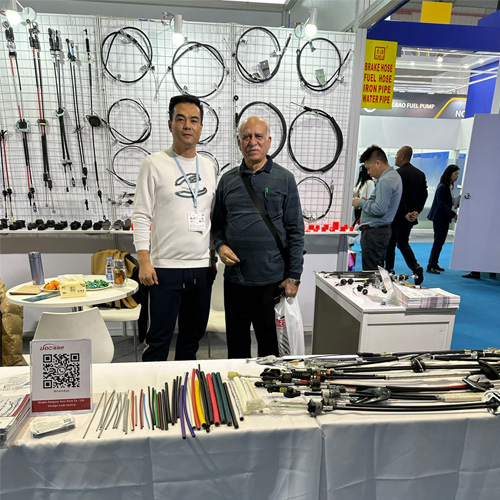derailleur gear cable
Understanding Derailleur Gear Cables A Closer Look
Derailleur gear cables play a crucial role in the functionality of modern bicycles, particularly those equipped with derailleurs for shifting gears. These cables are the lifelines that connect the shifters on your handlebars to the derailleurs that move the chain across the sprockets on the bike's cassette and chainrings. Understanding how these cables work and how to maintain them can significantly enhance your cycling experience.
At its core, a derailleur gear cable is a thin, flexible wire that allows the rider to change gears by pulling or loosening the cable from the shifters. When you twist the shifter, it either pulls or releases the cable, which translates to the derailleur moving in response. This movement shifts the chain to a different gear, enabling the rider to adjust to different terrains and inclines.
The construction of derailleur cables comprises several parts, including the cable itself, housing, and various ends. The cable is typically made of stainless steel or similar materials to prevent corrosion and wear. The housing is a protective sheath that keeps the cable clean and ensures smooth operation. Over time, dirt and grime can accumulate within the housing, leading to friction that impedes performance. Regular cleaning and maintenance of the cable housing can ensure optimal shifting performance.
derailleur gear cable

One of the most common issues cyclists face with derailleur cables is cable stretching. As the cable stretches over time, shifting becomes less precise and can lead to difficulty shifting into certain gears. Regular inspection of the cable for signs of fraying or wear can help spot issues before they become significant problems. If the cable is significantly worn or stretched, replacing it is often the best course of action to restore reliable shifting.
Another factor to consider is the adjustment of the cable tension. If you notice that your gears aren't shifting smoothly, the cable tension may be too loose or too tight. Most shifters come equipped with a barrel adjuster, which allows riders to fine-tune cable tension without needing extensive tools. This simple adjustment can make a world of difference in the bike’s performance.
Furthermore, the importance of proper installation cannot be overstated. If the cable is not routed correctly or if the housing is too long or short, it can lead to shifting inconsistencies. Seeking assistance from a professional bike mechanic or consulting instructional videos can ensure that the cable is installed properly.
In conclusion, derailleur gear cables are essential for the smooth operation of modern bicycles. Regular maintenance, timely replacement, and proper adjustment can help extend the life of your cables and ensure a more enjoyable ride. Whether you’re a casual cyclist or an avid racer, understanding the nuances of your bike’s derailleur system will empower you to tackle any terrain with confidence. With a little care, you can keep your bike in top condition and enjoy the open road to its fullest.
-
Upgrade Your Vehicle with High-Quality Handbrake CablesNewsNov.01,2024
-
Optimize Your Bike's Performance with Quality CablesNewsNov.01,2024
-
Enhance Your Vehicle's Performance with Quality Clutch ComponentsNewsNov.01,2024
-
Elevate Your Vehicle's Performance with Quality Throttle CablesNewsNov.01,2024
-
Elevate Your Vehicle's Performance with Quality CablesNewsNov.01,2024
-
Affordable Solutions for Your Cable NeedsNewsNov.01,2024
